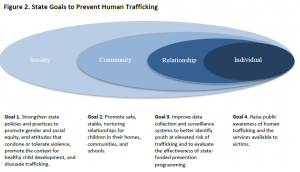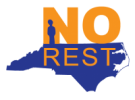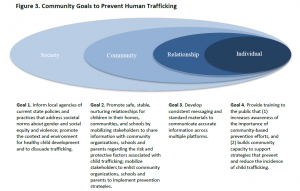Prevention
Excerpts from the Comprehensive Plan. For access to the report and its various sections in full, click here.
Recommendations to Prevent Human Trafficking
To prevent the trafficking of children and youth, stakeholders are encouraged to advocate for and support implementation of policies and practices that mitigate risk factors that have been shown to increase the risk of trafficking by increasing demand for and supply of human trafficking victims. These protective policies and practices include measures to increase the safety and well-being of children in their homes, and efforts to develop data and research that can inform prevention activities at the state and local levels. Some of these policies and practices currently exist in North Carolina whereas others are new recommendations.
State and Community-wide goals, using the Social-Ecological Framework:
“The Social-Ecological framework is based on evidence that no single factor can explain why some children or groups face higher risk of perpetrating or experiencing maltreatment, while others remain more protected from maltreatment. Using this framework, trafficking is viewed as an outcome of interactions among factors across four levels: individual, relationship, community, and society.”
(click on the images to enlarge)


